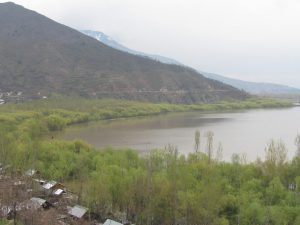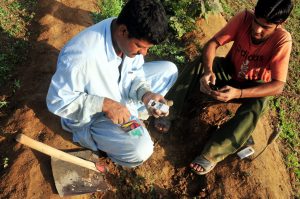After three years of declining coal production, China has suddenly seen a rise in both its production and consumption. While analysts debate whether this is a mere blip in an overall declining trend of coal use, the rest of Asia is also caught in the midst of a strange debate where the death of coal is being celebrated while, at the same time, official consensus seems to be that coal will continue to be a large part of future plans.
The most important developing economy in South Asia is India, given its sheer size, and it showcases some of the trends that are now developing. One specific trend has been the shutting down the production of coal plants in Asia, but this trend may be subject to reverses. As China’s recent “blip” shows, countries will grab growth as and how it comes, and will not wait for cleaner power. In July Reuters reported that, despite current energy surpluses, India’s largest power utility, NTPC Ltd, owned by the government, is planning on building coal plants with at least 5 gigawatts (GW) capacity.
This is primarily because the current glut in the Indian power sector is due to poor last-mile connectivity. Approximately 300 million of India’s 1.3 billion citizens are not connected to the grid, and as they come on to the grid, the demand will inevitably rise. China’s example is instructive in this regard, as it defined the access to electricity as a form of basic “human right” that the state needed to give to its citizens. It is unsurprising, then, that India has echoed similar sentiments, with its government promising to bring electricity to all its citizens.
Nor is India alone in this desire. Pakistan’s current government came to power promising to deal with its massive electricity crisis, a problem it has not managed to overcome. In Bangladesh, the government is also pledged to bring electricity to all its citizens, even if it has to increase electricity generation from coal to more than half of its total generation, compared to a current 1.6%. Bangladesh’s example is particularly instructive because it had tried to aggressively expand energy generation from renewables, but was only able to achieve 1%, despite a successful project to provide solar electricity for personal use in homes. Now it is betting wholesale on coal, primarily to make electricity accessible to all.
The political pressure on countries – whether democracies or not – to deliver on this key demand will remain a key driving factor. It will also be married with the demand to make a quick profit. It is not just coal plants that are not being built, but hydropower plants as well. Furthermore renewable energy has its own specific problems. Without being able to store the electricity created, or feed it back into the grid, solar power, wind and hydropower are subject to lack of surety. In the worst case scenario, as in Sikkim, in a bid to make profit from peak demand between 6 pm and 9/10 pm, hydropower dams release water only at such times, with major problematic outcomes downstream.
The rush to coal in Asian countries reflects these three concerns: political pressure to provide energy, reliability of supply, and profits. Ironically it is the last where change may actually happen. While a number of commentators have pointed out the falling price of solar power as a game changer, there are two interconnected areas which are generally ignored: subsidies and health costs. The low price of coal, and other fossil fuels, is due to energy subsidies, which are in the form of tax breaks, incentives, and “the failure to adequately charge for the cost of domestic environmental damage,” as well as the impact of climate change by producing carbon pollution.
One report suggested that “If China eliminated subsidies to fossil fuels and if its energy prices would reflect their true costs, up to 66% of currently occurring premature deaths could be avoided, because of improved air quality through less coal use.” In South Asian countries these estimates are still not in the public eye, but it is worth looking at the special report released by the International Energy Agency in 2015 on India. Despite a best case scenario of over 40% of energy generation through renewables by 2040 (it is a little less than 30% now), coal would remain one of the main generators of energy. As a result, there would be a substantial impact on the health of Indians, as well as agriculture productivity.
The IEA report notes:
The rise in outdoor PM2.5 emissions alone is calculated to lead to a reduction in life expectancy of more than seven months (this is in addition to the 16.8 months in reduced life expectancy that is a result of current PM2.5 levels). This corresponds to a 140% increase in premature deaths, which will reach 1.7 million in 2040. Indoor air pollution, from the continued though diminished use of solid biomass for cooking, could be expected to add considerably to this number. In addition, the rise in ground-level ozone leads to crop losses. By 2040, the increase in ground-level ozone gases leads to a 13% decrease in wheat yield and will have adverse impacts additionally on soybean, rice and maize crops.
These premature deaths and agriculture productivity loss are rarely addressed in the costs column when calculating the price of electricity produced by coal. Nonetheless it seems that ordinary citizens are making the connection. In Pakistan, a seven year old girl has sued the Pakistani government in the country’s Supreme Court over the costs of pollution, while in India, a nine year old one has done the same. It is only when these factors are properly calculated that the cost of coal will become obvious, and push Asia towards healthier, and truly more economic, alternatives in the quest of providing a better life to the people living here.










